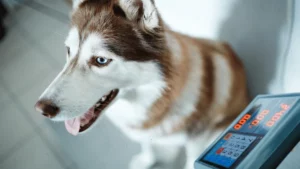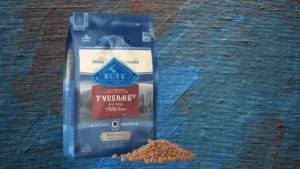How To Treat Your Dog For Fleas?
Fleas are tiny insects that feed on the blood of their hosts, such as dogs. Here are some of the ways you can treat your dog for fleas!
Fleas are tiny insects that feed on the blood of their hosts, such as dogs. These little wingless creatures can jump as far as 12 inches. Fleas move very quickly, and you don’t even notice they’re on your pet first. You’ll only know once your fur baby scratches more often.
When fleas bite your dog, their saliva causes an allergic reaction. That’s why your pet will start to feel itchy. Did you know that fleas can also affect and bite humans? If your fur baby has fleas, it’s time to treat them with medication before it worsens.
Here are some of the ways you can treat your dog for fleas:
1. Give Your Fur Baby A Bath
One of the most important things to treating fleas puppy is to bathe your dog. It’s also the easiest first aid before using any medication on your pet’s skin and fur. All you need is lukewarm water and your dog’s shampoo or soap. You can use dish soap because it helps drown the adult flea.
2. Use A Fine-Tooth Comb
Using a fine-tooth comb while you bathe your dog is one way to remove these tiny and fast fleas. These insects are hard to grab on your dog’s fur, so using this kind of comb can be helpful. The comb has narrow-spaced teeth that’ll trap fleas in between them. Apart from the fleas, their eggs can also be removed when a comb is used.
3. Visit Your Veterinarian
It’s always best to consult your veterinarian before even giving your dog any topical or oral medication, especially when you have doubts about the situation. A professional would know the proper flea treatments and how to prevent them in the future. You’ll be able to understand the safest treatment you can provide for your fur baby with the help of a doctor.
4. Employ Medication
Many medications are now available on the market to treat your fur baby’s fleas. Advanced technology has helped in finally creating the best oral and topical products for your dog. Prescription and non-prescription medication are available:
Prescription:
Your veterinarian can provide prescriptions for your pet’s flea medication. This type of treatment is fast-acting when it comes to killing fleas. There are oral tablets that begin killing the insects within two hours after taking them. The effect will last for three months, and the dosage depends on your dog’s weight.
Non-prescription:
Aside from prescription tablets, there are over-the-counter products that you can buy without the vet’s prescription. These are flea powders, flea shampoo, flea sprays, and flea collars. They might not work effectively as prescription tablets, but pet owners have good reviews about these items.
5. Clean Your Home
Prevention is better than cure. Tidying up your living space will lessen the chance of your dog being bitten by fleas. Now that your fur baby is on medication, you might want to maintain the cleanliness of your house’s indoor and outdoor areas.
It’s vital to wash all your bedding with mild detergent and hot water. If you have carpets at home, make sure to vacuum them properly. There are also cleaning products made for disinfecting and killing fleas. Make sure to thoroughly clean your home, especially the parts of the house where your pets usually go.
6. Try Out Home Remedies
Apart from the medicines and over-the-counter products that can help your fur babies from fleas, there are also home remedies you can do to aid them from these insects. Here are some of the solutions you can do at home:
Apple cider vinegar:
Feeding dogs half a teaspoon of apple cider vinegar daily will make their skin more acidic. That way, fleas will find your pet inhospitable because their coat and skin are acidic. The amount of half a teaspoon a day is for dogs with 25 pounds of weight. If your dog is 50 pounds, you must feed your fur baby one teaspoon of apple cider vinegar.
Garlic:
When given in small amounts, garlic isn’t harmful to dogs. Giving your fur baby freshly chopped garlic can be used as their internal flea repellant. The safe amount of garlic is a quarter of a clove for every ten pounds of your fur baby’s weight.

Treating Dogs with Fleas
There are a few different ways to treat dogs with fleas. The most common method is to use a spot-on treatment applied directly to the dog’s skin. Some oral medications and shampoos can be used. Treatments should be given monthly and year-round to prevent flea infestations. And, be sure to clean your home and yard of any flea eggs or larvae to avoid re-infestation.
Soothe Dog Fleas
As any pet owner knows, fleas can be a big problem for dogs. Not only are they itchy and uncomfortable for your furry friend, but they can also carry diseases. Soothing dog fleas is important for the health and wellbeing of your pet.
There are a few things you can do to soothe dog fleas. One is to give your dog a flea bath. This will kill any fleas on your dog’s body and help to reduce the itchiness. You can also use a flea comb to remove fleas from your dog’s fur. Be sure to dispose of the fleas you catch in the comb so they don’t jump back onto your dog.
Another way to treating dog fleas is to use a natural flea repellent. Many recipes online for homemade flea repellents use ingredients like lemon juice, vinegar, and essential oils. These can be sprayed on your dog’s fur or added to their shampoo.
Finally, you can try giving your dog an anti-flea medication. This is the last resort, as some dogs can negatively react to these drugs. However, it may be worth a try if nothing else is working.
Final Thoughts
Prevention is very important, but once a flea finds a home on your dog and feeds on its blood, proper help and medication are needed. Luckily, there are several effective ways to treat your furry partner’s flea woes. Some of them are enumerated above. Seeing your fur baby happy, healthy, and free from fleas is possible when you incorporate them into your routine. As a golden rule, if the flea infestation still persists, never hesitate to get in touch with your trusted veterinarian for sound advice.














